Governor Jerry Brown’s Response to California Drought Follows Two Paths
The governor introduced a $US 687 million emergency spending bill Wednesday as his office works on comprehensive groundwater reform.
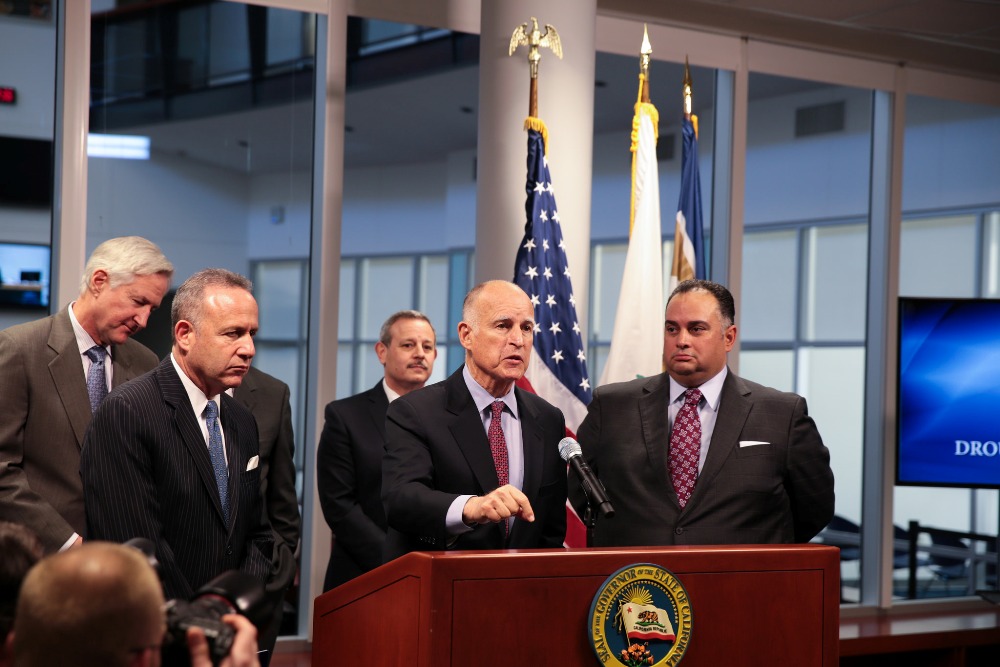
By Brett Walton
Circle of Blue
SACRAMENTO, California – Governor Jerry Brown, joined by state water and emergency managers and Democratic leaders, proposed yesterday to spend $US 687 million this year to help California communities endure the state’s worst drought in the last half millennium. Roughly 80 percent of the money will complete unfinished water projects and build new facilities that treat and reuse water.
The governor’s emergency funding is one path the state is taking to respond to three years of dramatically below average precipitation that have put the water supply for the nation’s most populous state in a precarious position. Reservoirs are sandboxes, wells are spitting air, and farmers are struggling to keep citrus and nut trees alive.
National leaders have stepped up as well. Last week, President Obama pledged $US 193 million in drought aid for the state, while Democratic and Republican members of Congress introduced competing bills that reflect longstanding political differences over ecosystem protection and reservoir construction.
–Tim Quinn, executive director
Association of California Water Agencies
The Brown administration’s other path points toward changes in groundwater policy so that California, with its frequent swings between wet and dry, is better prepared for the hydrological changes brought by a warming globe, and for the next dry cycle. The governor wants to empower local water agencies to enforce groundwater restrictions. If the locals fail, the state will take over.
Though the details in the broad framework are still missing and time is short in the legislative calendar, water policy experts, state officials, and industry groups believe that groundwater reforms are likely to happen this year.
“We’re probably going to see significant movement on groundwater policy,” Tim Quinn, executive director of the Association of California Water Agencies, told Circle of Blue, adding that the 450 local agencies he represents want to “raise the bar for groundwater.”
The drought relief bill and the groundwater discussion come at a frantic time for California water policy, as the state ponders spending even greater sums. A $US 11 billion bond is scheduled for the ballot in November, though lawmakers have introduced four cheaper versions. The state is also considering a contentious $US 25 billion plan to build two water supply tunnels through the fragile Sacramento-San Joaquin Delta.
The outcome of these debates will help determine whether the public has the appetite for investments in a new generation of water infrastructure and whether those investments should focus on traditional pipes, canals, and pumps, or on facilities that recycle wastewater and revive aquifers. Governor Brown’s proposal on water spending, and the big bond measure, are challenges to the politics of fiscal austerity that have dominated governing in California and across the country.
“The number one challenge we have before us is financing,” said Mark Cowin, director of the Department of Water Resources, at a meeting Wednesday of the California Water Commission.
Drought Bill Builds for the Future
The governor’s drought relief bill emphasizes the next generation of water supply hardware. Roughly 80 percent of the money, which comes from water bonds approved by voters in 2006, goes towards infrastructure projects for treating sewer water for reuse, capturing stormwater before it runs into the ocean or rivers, recharging aquifers, and water conservation.
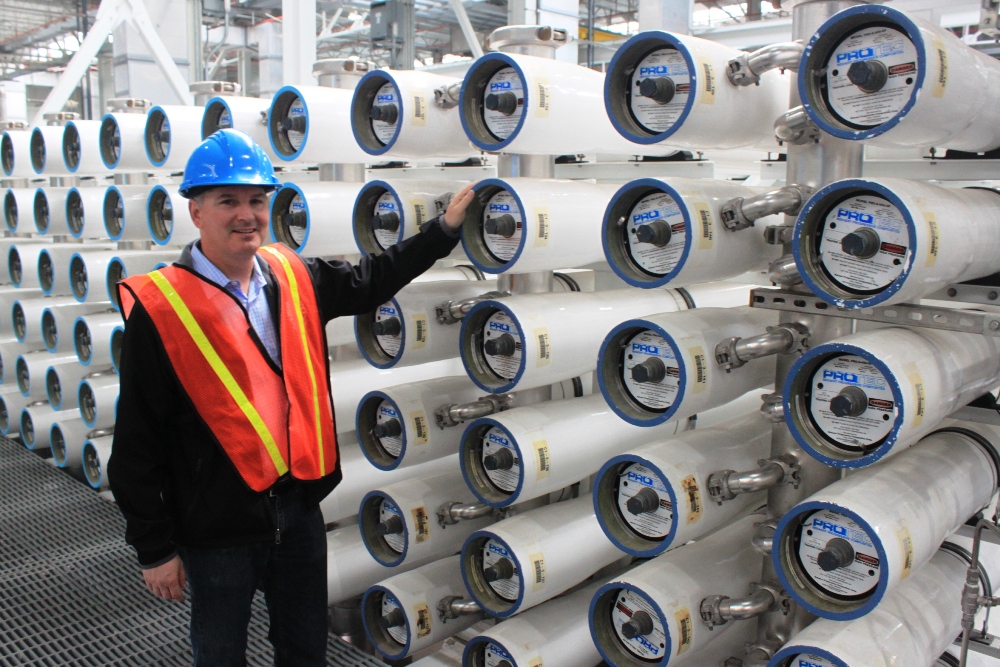
The bill includes $US 46 million for food and housing for the people the drought has pushed to the edge. In most cases, this will be hired farmworkers who have no fields to harvest. The bill also makes available $US 15 million for communities at risk of running out of water. The state has identified 17 such communities, and is helping them drill new wells or connect to nearby systems with sufficient supplies.
“We’re not waiving environmental laws, we’re not hiking fees or taxes, we’re using money we have available now to save time, save water, and help Californians hardest hit by the drought,” said Senate pro Tem Darrell Steinberg, the bill’s co-sponsor.
The bill, which requires legislative approval, comes a week after President Obama visited farm towns in the Central Valley and pledged $US 193 million in drought assistance to California, most of which would go to ranchers and food banks.
Groundwater Reform Takes Shape
Brown’s plan for groundwater reform has two planks. Above all, the governor wants to give local agencies the tools for managing their aquifers. There are 515 groundwater basins in the state, a large number that reflects great diversity in the resource. Counties and water supply districts, formed by an act of the legislature, are in charge of groundwater management but they lack the authority to enforce their regulations. The Brown administration wants to change that.
The second plank is state control. If local agencies do not or cannot properly regulate groundwater, the state will take over, according to the California Water Action Plan, which was approved in January. The governor’s 2014-15 budget includes $US 1.9 million for 10 positions on the State Water Resources Control Board to enforce groundwater laws.
Groundwater accounts for one-third of the state’s water use in a normal year and much more during drought, when rivers shrivel. Yet in many areas the state’s aquifers are poorly managed and significantly depleted, particularly in the heavily agricultural Central Valley.
“The state is saying, ‘Manage your basin, or we’ll step in,’” Frank Mecham, a San Luis Obispo County supervisor said at a board meeting Tuesday in San Luis Obispo, a coastal county. “That sounds like a threat, but I’ve heard it enough to believe it.”
–Frank Mecham, supervisor
San Luis Obispo County
Mecham was one of roughly 100 water managers and policy leaders who attended the governor’s groundwater consultation last week in Sacramento. To work out the details in his broad plan, Brown is taking public comments for 60 days.
One of the biggest unresolved issues will be defining the threshold at which state intervention is necessary, said David Orth, general manager of Kings River Conservation District and a member of the California Water Commission, which advises the state. Some options are strict, such as allowing no annual pumping above the rate that water soaks into the ground, called overdraft. Others are more flexible.
“There is a spectrum,” Orth told Circle of Blue. “On one end is no overdraft at all. On the other is something like taking a 20-year average, a more narrative approach.”
The decisions need to come quickly. The deadline for filing bills in the legislature is February 21. A placeholder bill can be filed and the text changed later, but with the 60-day public comment period that the governor promised, the timetable will still be rushed.
Some criticize the governor for the last-minute push.
“The governor’s schedule is not in synch with the legislature,” said Dennis O’Connor, the principal consultant to the Senate Committee on Natural Resources and Water and the Senate’s point man for groundwater policy. “Ideally he is working on this in the fall.”
O’Connor told Circle of Blue the tight schedule reflects uncertainty in the governor’s ultimate goals.
“I don’t think they know want they want,” he said. “I don’t think they can articulate what they want to see manifested in a new groundwater policy.”
If groundwater were the only water item on the docket, the schedule would be head-spinning. But the state’s drought crisis has come at a time when several other important water issues are also at hand. The legislature is debating changes to a $US 11 billion water bond that is on the ballot in November. Lawmakers filed four alternate versions, all cheaper, all with different priorities. The money will help California rejigger its convoluted system of canal, pipes, and reservoirs so that it can adapt to the water demands of a growing state and a warming world. Overhauling the surface water system affects groundwater too – when rivers are low, more pumping occurs.
The governor’s office also recently wrapped up public meetings for the Bay-Delta Conservation Plan, a controversial $US 25 billion plan to build a pair of water supply tunnels beneath the faltering Sacramento-San Joaquin Delta. The total cost including debt repayment could be double.
Despite the complexity, the state needs to keep its eye on the groundwater goal, Orth argues.
“We have to be aggressive because we don’t want to look like we’re stalling or delaying,” he said. “The time is ripe.”
Brett writes about agriculture, energy, infrastructure, and the politics and economics of water in the United States. He also writes the Federal Water Tap, Circle of Blue’s weekly digest of U.S. government water news. He is the winner of two Society of Environmental Journalists reporting awards, one of the top honors in American environmental journalism: first place for explanatory reporting for a series on septic system pollution in the United States(2016) and third place for beat reporting in a small market (2014). He received the Sierra Club’s Distinguished Service Award in 2018. Brett lives in Seattle, where he hikes the mountains and bakes pies. Contact Brett Walton

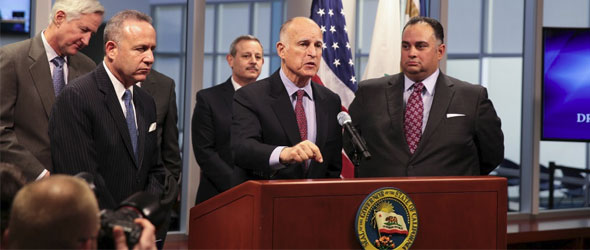


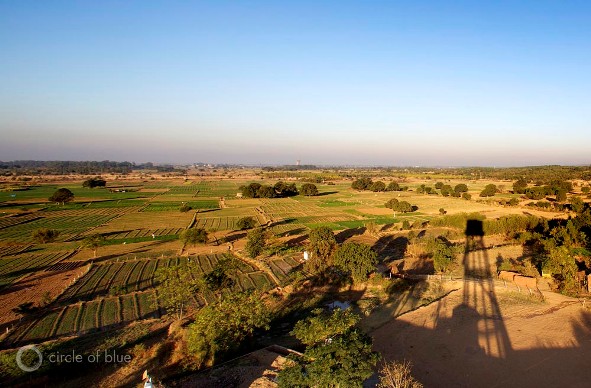
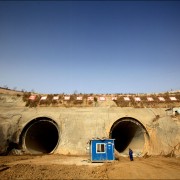





Leave a Reply
Want to join the discussion?Feel free to contribute!